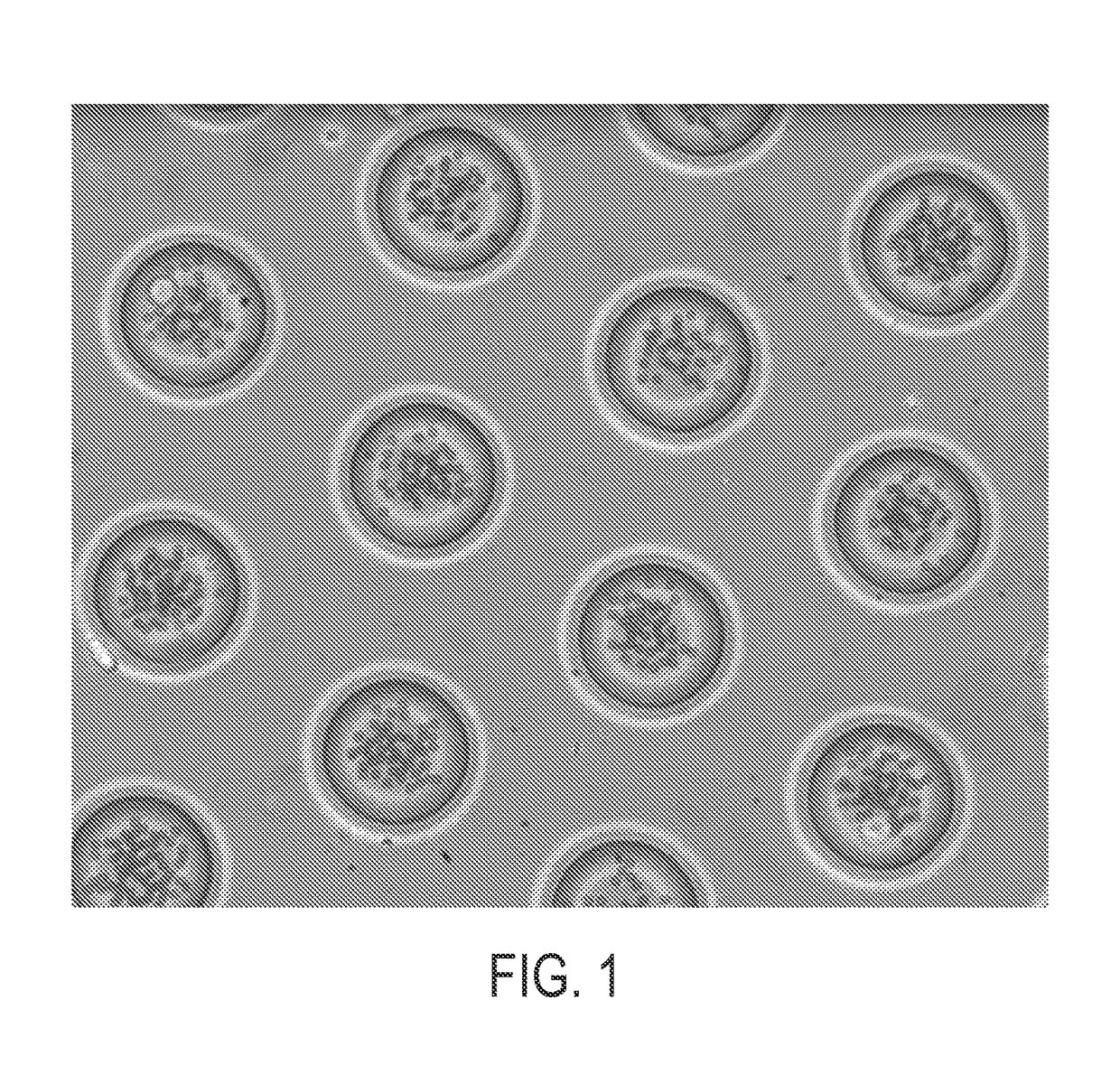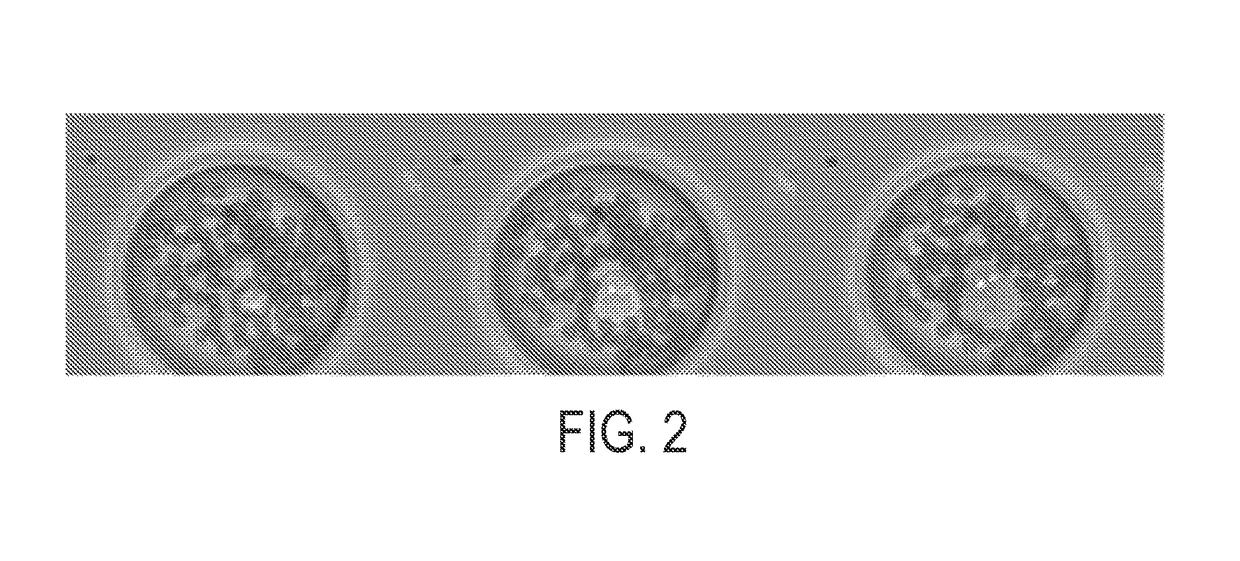High throughput sequencing of multiple transcripts
a transcript and high throughput technology, applied in the field of molecular biology and immunology, can solve the problems of inability to sequence or reconstruct the full adaptive immune receptor, which includes both chains, and cannot yet resolve the heavy and light chain pairing at high throughpu
- Summary
- Abstract
- Description
- Claims
- Application Information
AI Technical Summary
Benefits of technology
Problems solved by technology
Method used
Image
Examples
example 1
Construction of a High Density Microwell Plate
[0062]A grid of micropillars (56 μm diameter, 50 μm height) are photolithographically patterned onto a silica wafer using SU-8 photoresist (Fisher Scientific) and the silica wafer is used as a mold to print polydimethylsiloxane (PDMS) chips (Sylgard 184, Dow Corning) with the dimensions of a standard microscope slide and containing approximately 170,000 wells per chip. Dimensions of the micropillar may range from about 5 μm to about 300 μm wide and from about 5 μm to about 300 μm high. Molded PDMS chips are silanized in an oxygen plasma chamber for 5 minutes to generate a hydrophilic surface. The PDMS chips are then blocked in 1% bovine serum albumin (BSA) for 30 minutes and washed in deionized water and phosphate-buffered saline (PBS) to prepare for cell seeding.
example 2
Method for Linking Two Transcripts from a Single Cell in a High Throughput Manner
[0063]The process for physically linking two or more transcripts derived from a single cell in a high throughput manner uses the sealed PDMS microwell device of Example 1 to trap single cells into separate wells. Cell lysis also occurs, and poly(T) magnetic micron size beads for mRNA capture are also introduced into the microwells. Once cells and beads have been loaded, the device is sealed with dialysis membrane and a lysis solution is introduced. Subsequently, beads are recovered, resuspended in solution with reagents, primers and polymerase enzyme for overlap extension (OE) RT-PCR, and the solution is then emulsified so that each bead is encapsulated within a single emulsion droplet. The emulsion is subjected to thermal cycling to physically link the two transcripts (e.g., immunoglobulin heavy and light chain cDNA), and the linked products are recovered from the emulsion following cycling. A nested P...
example 3
High-Throughput Transcripts Pairing Analysis Using Defined Mixtures of 5 Cell Lines
[0078]Five immortalized B cell lines were mixed at different ratios and used to examine pairing efficiency of the linked products generated by OE-PCR. The five B cell lines used in this experiment were: MOPC-21, MOPC-315, IM-9, ARH-77, and DB (see Table 5). DB expresses extremely low levels of VH and VL transcript and was used as a negative control.
[0079]All cell lines were obtained from ATCC and cultured in RPMI-1640 supplemented with 10% FBS and 1% penicillin / streptomycin (see Example 2). Following a 30-minute RNAse treatment and subsequent wash, cells were seeded into microwells at a density of 17,500 total cells per chip along with poly(T) magnetic beads according to Example 2. Wells were sealed with a dialysis membrane, cells were lysed, and mRNA was allowed to anneal to the beads (Example 2). Beads were then recovered, resuspended in OE RT-PCR mix, and placed in an emulsion (Example 2). OE RT-PC...
PUM
| Property | Measurement | Unit |
|---|---|---|
| volume | aaaaa | aaaaa |
| diameter | aaaaa | aaaaa |
| volume | aaaaa | aaaaa |
Abstract
Description
Claims
Application Information
 Login to View More
Login to View More - R&D
- Intellectual Property
- Life Sciences
- Materials
- Tech Scout
- Unparalleled Data Quality
- Higher Quality Content
- 60% Fewer Hallucinations
Browse by: Latest US Patents, China's latest patents, Technical Efficacy Thesaurus, Application Domain, Technology Topic, Popular Technical Reports.
© 2025 PatSnap. All rights reserved.Legal|Privacy policy|Modern Slavery Act Transparency Statement|Sitemap|About US| Contact US: help@patsnap.com



